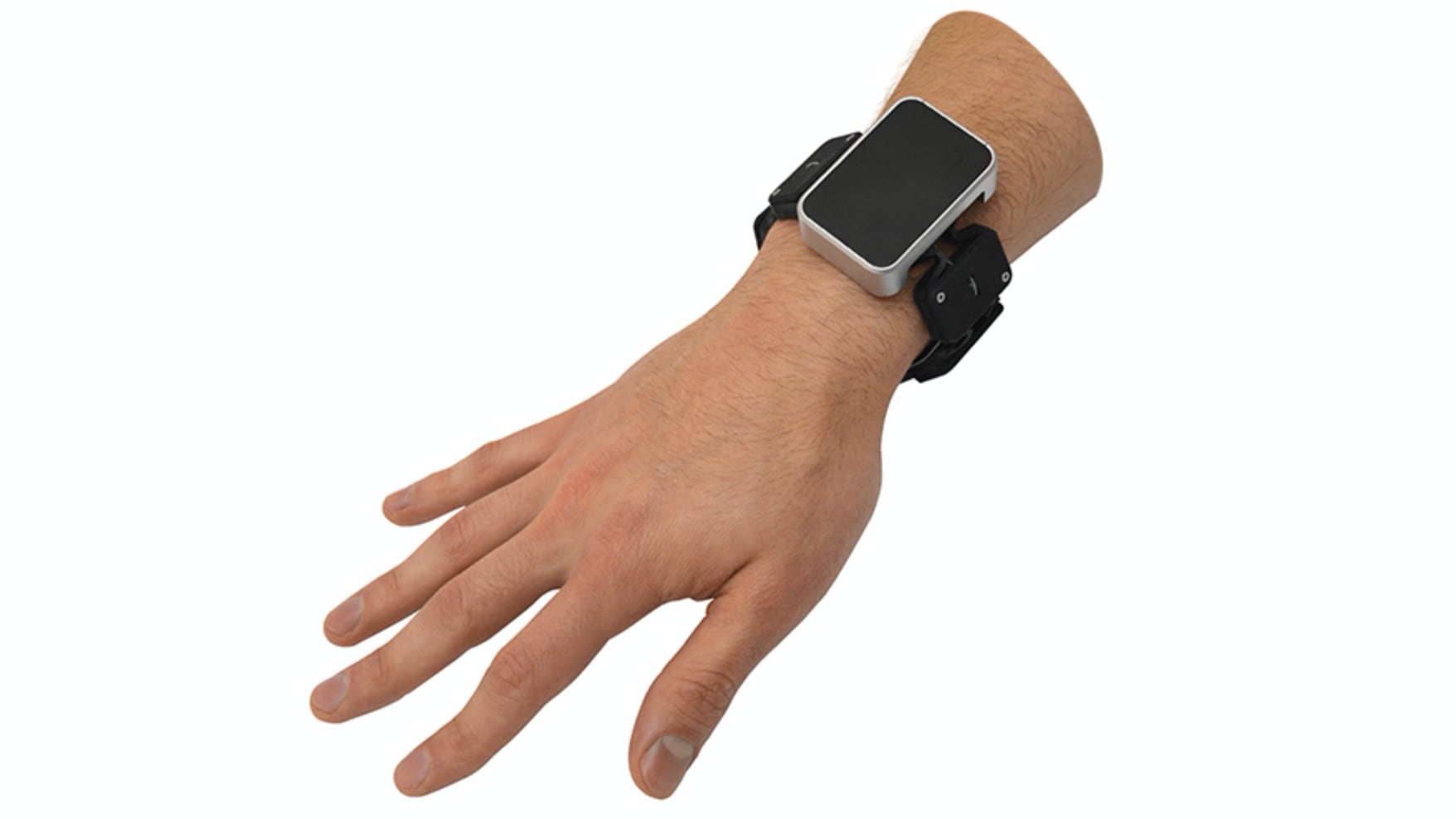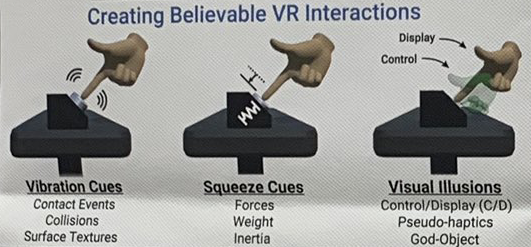Facebook Has Developed a Haptic VR/AR Wristband Prototype
A team at Facebook Reality Labs in collaboration with a PHD intern from Rice University have developed a new haptic device known as Tasbi which is worn on both wrists. The haptic device uses a combination of vibrations and squeezing (dynamic tension adjustment) in mimicking the haptic feedback for the virtual objects. Every “tactor” in the wristband will include the individual linear actuator to allow for a precise control of vibrations.

So far, the primary tools for interactions between the VR/AR headset wearers and the virtual worlds they immerse themselves into have been the handheld controllers. The Facebook wristband prototype represents what the future controllers could be: hands-free virtual reality controllers where the users won’t need to hold the controllers in their hands to feel the feedback from the VR environment.
The innovative wristband prototype for a hands-free future was unveiled by the Facebook Reality Labs. Known as the Tasbi wristbands, the prototype is capable of sending different types of haptic feedback through the hands and wrists of the wearer.
The Tasbi wristbands were revealed during the World Haptics Conference in 2019 and they came as a set of small boxes which are linked through a central band. There is a single large box centered to appear like an oversized smartwatch and which houses the haptic actuator. Then there are the small boxes each of which contains its own linear actuator that can precisely send vibrations while also dynamically adjusting the tension from various places on the wearer’s wrist.
The Tasbi actuators can collectively provide “vibration cues” along with “squeeze cues” based on the digitally-generated or virtual content that the user will be interacting with. The actuators will vibrate from side to side and mark the contacts, collisions and also interface with the textures. It can also vibrate from front to back which suggests that springiness of the weights and the buttons. The Tasbi wristband can also be used when interacting with “visual illusions” like the holograms where it can provide a sense of differential feedback for objects or UIs that are obviously unreal.

However, Tasbi does not have an actual control hardware. The wristbands can be conceptually paired with virtual reality or augmented reality device’s computer vision system for the detection of the hand and finger motions. This means it is possible to use the haptics without having to hold a controller.
Facebook is also experimenting with other innovations and has dabbled in the possibility of leveraging machine learning/artificial intelligence wristband in interpreting the electrical signals as changing finger positions. Paired with its Tasbi wristband, this might completely eliminate the need to use the traditional controllers.
The development of peripheral virtual reality experiences such as haptic feedback has progressed rapidly over the past few years. Its spearheaded by diverse players ranging from the fringe startups fundraising on Kickstarter to some of the biggest tech companies in the space which are currently experimenting with various haptic systems. Microsoft, for example, prototyped its sophisticated haptic system for virtual reality and augmented reality applications known as TORC which is based on a handheld controller. There are various other industry players that are currently developing or researching on haptic gloves or armbands, each of which is coming up with unique approaches to the problem of developing tactility for the simulated objects or environments.
Tasbi is currently an AR/VR research project at the Facebook Reality Labs so there aren’t even guarantees that it will be developed into a consumer product and shipped to end users. However, the effort that Facebook has put into this shows it considers this innovation as one that has some good potential so it may actually go to production after all. Facebook will soon publish a full research project that will provide details of the project.
https://virtualrealitytimes.com/2019/07/19/facebook-has-developed-a-haptic-vr-ar-wristband-prototype/https://virtualrealitytimes.com/wp-content/uploads/2019/07/Facebook-Tasbi-haptic-feedback-wristband-prototype-600x338.jpghttps://virtualrealitytimes.com/wp-content/uploads/2019/07/Facebook-Tasbi-haptic-feedback-wristband-prototype-150x90.jpgHapticsHardwareA team at Facebook Reality Labs in collaboration with a PHD intern from Rice University have developed a new haptic device known as Tasbi which is worn on both wrists. The haptic device uses a combination of vibrations and squeezing (dynamic tension adjustment) in mimicking the haptic feedback for...Sam OchanjiSam Ochanji[email protected]EditorVirtual Reality Times - Metaverse & VR
